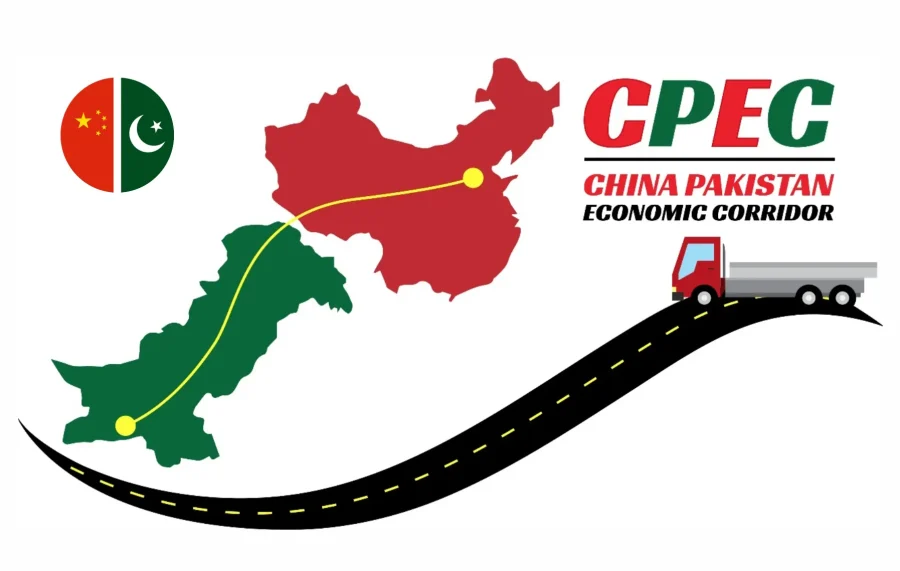With the completion of the first decade of the Chinese Belt and Road Initiative (BRI) and its flagship project, the China-Pakistan Economic Corridor (CPEC), there has been a significant surge in terrorism within its member countries, notably Pakistan. This surge underscores emerging socio-economic, geopolitical, and geostrategic tensions in the region and beyond.
Moreover, hangover of the war lord’s mentality of interim set-up of Taliban, regrouping of TTP, TTA, BLA, MB, US-China trade/economic war, decoupling, delinking, China’s Collapse/Peak, China’s Overcapacity hypes, the US constant & continued national narrative about China’s Containment and complex geopolitics of the South China Sea, Asia NATO, expansion of the AUKUS, reactivation of QUAD, disruptions in the Red Sea, volatility in greater Eurasian region and, last but not the least, Japan militarization and geostrategic of missiles in Asia-Pacific also act like a supplemental pushing factors of increasing terrorist activities in Pakistan. Thus the journey of trans-regional connectivity, immense socio-economic prosperity, infrastructure development and green transformation has been somehow compromised and compressed in the member countries and, of course, in Pakistan.
The recent surge in terrorist attacks in Pakistan has prompted urgent discussions on enhancing security measures to safeguard Chinese workers and CPEC projects. The emergence of a Shadow Province in Balochistan, attributed to groups like TTP, BLA, and MB, poses a significant threat. Additionally, Al-Qaeda infiltration in Gilgit Baltistan and the reactivation of Sleeper Cells in urban areas highlight serious security concerns for policymakers and security agencies. These developments jeopardize both national security and the socio-economic stability generated by CPEC initiatives.
The surge in terrorism targeting Chinese workers and CPEC projects highlights significant challenges for the BRI, including threats from various terrorist organizations like ISIS-K, TTP, TTA, and MB. This global phenomenon extends beyond Pakistan, impacting regions across Africa, South Asia, Southeast Asia, and parts of Central Asia, threatening national security and sovereignty. Moreover, ongoing Russia-Ukraine conflict has also spillover ramifications which force inhabitants of tiny countries like Nepal, Maldives, Sri Lanka and heavyweights Bangladesh and India to engage in it. Thus China’s Maritime Silk Road (MSR) and the development of the Digital Silk Road (DSR) are in real danger. Additionally, the BRI’s westward and southward expansion is being slowed down because of the limited governmental capacity, corruption and weak institutions creating a set of risks and difficult policy dilemmas for Beijing.
CPEC, a key BRI initiative, establishes a vital transportation corridor linking the Indian Ocean to Western China. However, it grapples with stability challenges such as Baloch insurgents and religious extremist groups targeting Chinese assets. Anti-China nations fund and incite terrorism against CPEC. Locally, some groups accuse Pakistan of monopolizing CPEC’s benefits. Surprisingly, even the Deobandi sect in KP and Southern Punjab views CPEC as contradictory to its beliefs, reflecting diverse perspectives and tensions surrounding the project.
The indecisiveness of the former government of the PTI about countering the surge and regrouping of terrorism and terrorist activities in North & South Waziristan and advocacy of a strange idea of resettlement of the TTP factions in the country have blown our national narrative against terrorism. Resultantly, China and its CPEC projects as strategic partners and projects suffered badly.
Perpetual weak capacity building mechanism of the police of Sindh, KP and Balochistan remained one of the key factors providing foolproof security to Chinese and the CPEC projects. Their political vulnerabilities and administrative inefficiencies and pours vicissitudes of geography promoted incidents of infiltration at will in these provinces from the soil of Afghanistan.
PM Shehbaz Sharif’s assurance to China revived energy projects post-Dasu dam incident, affirming continued Chinese engagement in Pakistan. CPEC’s impact includes creating over 350,000 local jobs, constructing 1,400+ kilometers of roads, and adding 8,500 megawatts to the grid, ending power shortages. It has drawn over $25 billion in Chinese investment, projected to reach $62 billion by 2030, encompassing industrial zones, highlighting its substantial economic contribution and future potential.
In summary, the most recently-held SCO Defense Ministers summit in Kazakhstan has once again an important role of the SCO and its Regional Anti-Terrorist Structure (RATS) for eliminating three evils of terrorism, extremism and separatism in all the member countries.
Critical analysis reveals that the SCO has vividly reflected its commitment to tackling terrorism, extremism and separatism through joint military exercises and intelligence sharing. The establishment of the RATS has been contributory in addressing security challenges and nurturing regional stability. The SCO security cooperation focuses on fighting Three Evils, countering information security, drug and weapons trafficking, illegal immigration, financial security, internet-based and organized crimes in the member countries.
Thus Beijing should immediately reinforce collaboration with neighbouring countries on counterterrorism, seeking to cooperate and strengthen local forces to protect the BRI and the CPEC projects.
Comparative study of regional terrorism growth confirms that China’s terrorism concerns are/were primarily domestic and came from the East Turkestan Independence Movement (ETIM). However, it is feared that the ETIM has harvested seeds of sympathy and support from terror outfits like Tehreek-e-Taliban Pakistan (TTP), al-Qaeda and the Islamic State (ISIS-K). Most of these terror groups have threatened to target Chinese people because of the Xinjiang region.
To counter this, Beijing has however gradually increased its presence using the five pillars for engagement; the SCO, training and joint exercises, military aid, military sales, and private security companies (PSCs).
It is suggested that Beijing should also reactivate the Quadrilateral Cooperation and Coordination Mechanism (QCCM), a multilateral security cooperation framework composed of Afghanistan, China, Pakistan and Tajikistan along with Trilateral Dialogue with Pakistan and Afghanistan to chalk out a holistic and comprehensive counter-terrorism policy.
Moreover, the Chinese security forces should increase its patrolling at the Wakhan Corridor connecting Afghanistan which borders the province Xinjiang. In the broader region of Central Asia-Afghanistan-Pakistan, China’s primary security concerns should revolve around curbing increased battling out ISIS-K, Al-Qaeda, TTA, TTP, MB and ETIM extending any support to Uighur militancy through the prioritization of both capacity building and intelligence acquisition.










